|
|
| The DPV was built by Chenowth Racing Products, Inc.[1] The German Volkswagen Kübelwagen was the first military Light Utility Vehicle based on the Volkswagen Beetle which uses rear-wheel rather than four-wheel drive for mobility. Volkswagen components were also the basis for the post war dune buggy, and its layout is used in the DPV with rear-mounted air-cooled 200 hp (150 kW) Volkswagen engine. This makes the lightweight vehicle capable of accelerating from 0 to 30 mph (0–50 km/h) in only four seconds and able to travel at speeds of up to 80 mph (130 km/h).[2] With its standard 21 gallon (79.5 litre) fuel tank, the DPV has a range of about 210 miles (338 km). An optional fuel bladder can extend the range to over 1,000 miles (1,610 km). Payload capacity is 1500 lb (680 kg).
The DPV is a variant of the Fast Attack Vehicle, which was developed during the 1980s as part of the United States Army's High Technology Light Division (9th Infantry Division). The HTLD was given carte blanche to develop doctrine, decide force structure, and design equipment by then Army Chief of Staff Edward C. Meyer. One of the pieces of equipment created was the Fast Attack Vehicle. Chenowth delivered 120 FAVs to the Army in 1982. HTTB (High Technology Test Bed) in the units in the 9th Infantry were first to deploy these vehicles[citation needed]. Along with light off-road motorcycles, the FAV was intended to provide a highly mobile component to the mostly foot infantry unit.
Eventually, the FAVs were replaced by Humvees in general military use, which did not provide nearly the speed nor extreme off-road capabilities of the FAVs. FAVs were transferred to special forces use where it has been largely replaced by the Light Strike Vehicle. Armament
The original tests used commercial dune buggies modified to carry weapons such as TOW missiles and recoilless rifles. The recoilless rifles still had enough recoil to flip the lightweight dune buggies and were abandoned. The TOW missiles had much greater success, but they violated existing Army TOW doctrine. The Army had determined that a TOW needed a 3 man team to operate it. The DPVs could only carry a two man crew and they seemed perfectly capable of operating the TOW, but this would have meant revising Army doctrine and possibly changing TOW deployment throughout the Army. Fort Benning decided to offer a "superior" DPV design that allowed a third crewman. This design was rejected by the HTLD team and was never produced. The basic weapons on a DPV consist of a heavy .50 caliber M2 Browning machine gun, two lighter 7.62x51 mmM60 machine guns, and two M136 AT4 anti-armor weapons. In some cases, the driver's M60 or the gunner's M2 is replaced with a 40 mm Mk 19 grenade launcher. Other light machine guns such as the M240 machine gun or5.56x45 mm M249 SAW can also be mounted.
Fast Attack Vehicles and Special Operations VehiclesSpecial Operations is, by its very nature, outside of standard millitary protocols and therefore often requires equipment that differs from standard issue. This is true for weapons and no less true for vehicles. The photos on this page are a sample of various types of such vehicles, some completely unique purpose built for Spec Ops and others based on standard vehicles but modified for Spec Ops requirements. See also: USMC M-151 Fast Attack Vehicle.
In the late 1980s, Air Force special tactics units needed an agile rescue and casualty evacuation vehicle to replace the jeeps then in use. Raceco, an off-road racing vehicle manufacturer, built the prototype in 1991. The RATT can carry up to six ambulatory patients on litters and two medical personnel (usually PJs). It is equipped with two 24-volt batteries to provide power for medical equipment and floodlights at each patient station. Between 1992-1994, Raceco built 14 RATTs. M32 Multi-Shot Grenade Launcher (MGL)The M32 MGL is a hand-held 6-shot grenade launcher in use with SOCOM and the US Marine Corps. Ideal for special operations forces, the M32 MGL can lay down a high volume of fire - all 6 rounds can be fired in 3 seconds. The M32 MGL can fire all of the low-velocity 40mm grenades in use with the US military, including:
M32 FeaturesThe M32 has the following design features
M32 Specificationsweight : length : barrel length : rate of fire : muzzle velocity : effective range : caliber : M32 - Images and Further Info
A US Marine takes aim with a M32 grenade launcher. The launcher features a quad Picatinny rail system that can accept all standard accessories such as grips and illumination devices. US DoD photo by Gunnery Sgt. Mark Oliva, 1st Marine Division
Photo showing a grenade being loaded into the M32's 6-round chamber. A mix of grenades can be loaded. Once loaded, a specific round can be selected for firing without the need to break open the chamber. US DoD photo by Gunnery Sgt. Mark Oliva, 1st Marine Division
A US Marine checks the fall of a shot from his M32 MGL. Note the reflex sight mounted on the weapon. The sight compensates for the natural drift of the grenades fired from the M32 and can be used at night. Special Operations MotorcyclesThe use of motorcycles in the military goes back to before World War 2. Motorcycles have been used for administration / communication tasks such as the transfer of orders across the battlefield, for scouting / screening operations for larger vehicle formations, as a reconnaissance platform and as transport for special operations units. Even though, in some cases, the 2-wheeled motorcycle has been usurped by the 4x4 quad-bikes, or all-terrain vehicles (ATV), the are still employed by U.S. Special Operations Forces (SOF). Common features of U.S. SOF motorbikes include infrared headlights and brackets for holding the rider's personal weapon. Many are modified in order to decrease the motorcycle's signature such as being painted in infrared camoflague coatings or fitted with run-quiet mufflers. This article features images and info on the various motorcycle employed by U.S. special operations forces... Kawasaki KLR 250-D8
A pair of AFSOC Combat Controllers (CCTs) pictured riding Kawasaki KLR250-D8 motorcycles. CCT motorcycles can be airdropped from aircraft on special pallets under parachutes. The 75th Ranger Regimentalso use KLR-250s for administration and reconnaissance, along with newer, smaller Suzuki DS80 mini bikes. sourced from public domain | US Air Force Photo by 1st Lt. Gabe Johnson Kawasaki M1030
U.S. Marines with the 26th Marine Expeditionary Unit pictured before loading their Kawasaki M1030 motorcycles aboard a CH-46E Sea Knight helicopter, April 2005. The M1030 is a variant of the Kawasaki KLR 650 motorcycle. A more recent model, the M1030M1, can run on diesel, kerosene, JP4, JP5 and JP8 fuel. sourced from public domain | U.S. Marine Corps photo Christini AWD
A relatively new adition to the SOF inventory, the Christini AWD is reportedly in use by U.S. Navy SEALs, U.S. Army Special Forces and other Special Operations units in Afghanistan. The Christini AWD is based on the Honda CRF450 and features a liquid cooled 450cc four-stroke diesel engine. sourced from public domain | U.S. Army photograph by Sgt. Todd Robinson Mini Bikes
An AFSOC Special Tactics Combat Rescue Officer picture on a Kawasaki KLX110 0 mini bike at an airfield during a training exercise, 2012. AFSOC Combat Controllers use minibikes during airfield survey operations. They are smaller and lighter than the full scale Kawasaki / Christini motorcycles which also used by special tactics and are easier to deploy via parachute. Mini bikes are small and light enough to be attached to the sides of MH-6 helicopters and can be stowed on the rear of a GMV or similar vehicle. Aside from Air Force Special Tactics Teams, the Army's 75th Rangers also operate mini bikes, in the form of the Suzuki DS8.
| DPV - Specifications
Weight can be reduced by using titanium or aluminum frames and the body made of carbon fiber composite. Perhaps reducing the weight by 200 kg.
Light Strike Vehicle (LSV)Resembling props from Mad Max, Light Strike Vehicles (LSVs) are 3-man dune buggies designed to act as armed scouts and attack vehicles. They can be fitted with a smiliar array of weapons to the 110s. LSVs were taken to Iraq in 1991 but were not deployed by the SAS due to them being unsuitable for the rough terrain in Western Iraq. Due to the lack of space for fuel, ammunition and other stores, LSVs are only really suitable for short range operations.
Light Strike Vehicles are used by a number of special operations units around the world such as America's Delta Force and Navy SEALs (SEAL Desert Patrol Vehicle pictured) photo : US DoD USMC M-151 Fast Attack Vehicle (M151 FAV)
Chenowth Scorpion Desert Patrol Vehicle The ultimate SEAL Team joyride - the Scorpion DPV/FAV. The Scorpion DPV (Desert Patrol Vehicle) is a three-man on-road/off-road vehicle used for many long-range desert operations including close-air support or combat search and rescue missions. Originally designated as the FAV (Fast Attack Vehicle) the DPV has seen service primarily with the United States Navy SEALs through Operation Desert Storm and is assumed to be in current operational use along the fronts in the Iraq War and in Afghanistan. The concept of FAVs in combat dates back to World War 2 where the British Army utilized specially-modified "JEEPS" to shadow the movements, whereabouts and activities of the German Army in the Egyptian Campaign. These systems belonged to the Long Range Desert Group (LRDG) whose primary function had become reconnaissance and intelligence gathering. The Desert Patrol Vehicle (DPV) utilizes a modified construction frame like those found in base off-road race cars. Suspension consists of two frontal shock absorbers and four shock absorbers positioned in the rear. The suspension is controlled primarily by a position-sensitive 'trailing-arm' system. The DPV is actually a 2x4 off-road vehicle, though designed to go anywhere a 4x4 could naturally go. Power is derived from a Volkswagen 2-liter, 200 horsepower air-cooled engine that allows for speeds above 60 miles per hour and a range equal to 210 miles. Range can be augmented by was of a fuel bladder than increased its operational range some 1,000 further miles. The DPV (then as the FAV) was developed in the 1980s with a generous budget and some 120 vehicles were produced as well as militarized motorbikes for special forces use. The vehicle can be armed with a variety of mission-specific weaponry including the Browning .50 caliber heavy machine gun, the Mark 19 40mm automatic grenade launcher and the M60 .30 caliber general purpose machine gun. Ammunition stores are mission dependent. Additionally, and personal weapons carried by the crew become part of the lethality that is the DPV. Total payload for the DPV is a reported 1,500lbs. The DPV was first unveiled to American home audiences in the 1991 televised liberation of Kuwait City. SEAL Team members were shown on their DPVs in the Kuwaiti streets complete with the traditional Bedouin headgear in place. The DPVs were able to maneuver across the desert and through the city streets with relative ease, staying ahead of the regular army forces while keeping an eye on Iraqi armor formations, location and defensive positions. The DPV weapon system is extremely useful as a battlefield scout and reconnaissance vehicle in the special forces role. Other mission roles include target acquisition, surveillance, peacekeeping and deep strike. In large part, the DPV/FAV has been replaced in inventory by the LSV - Light Strike Vehicle. Specifications for the Chenowth Scorpion Desert Patrol Vehicle (DPV) / Fast Attack Vehicle (FAV)
|
|
|
|

.jpg)













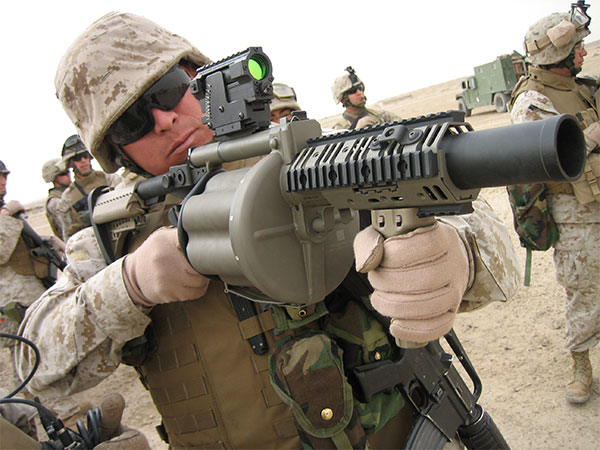
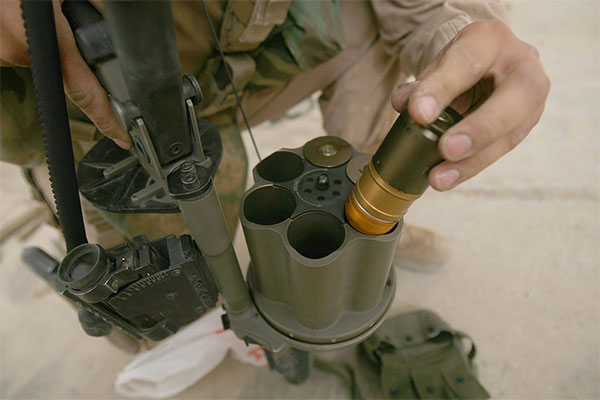
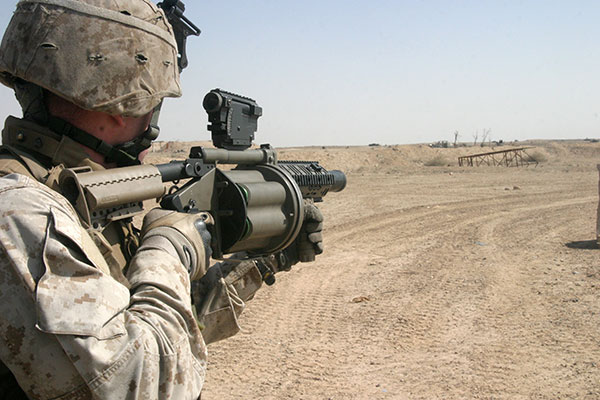
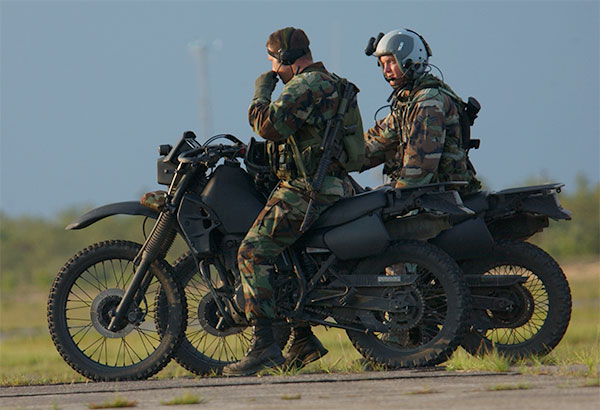
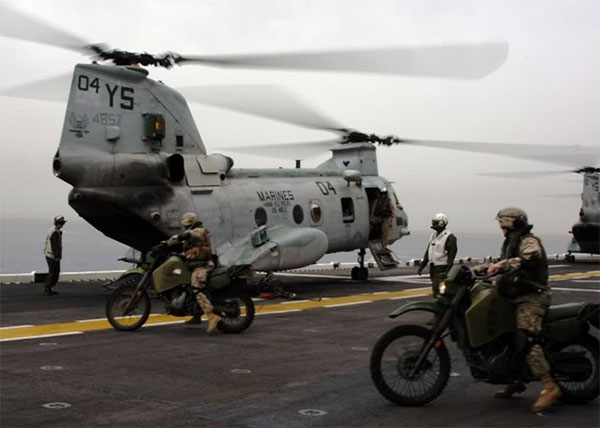
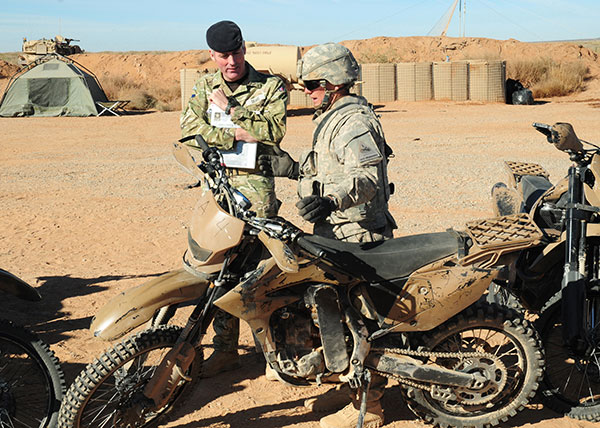
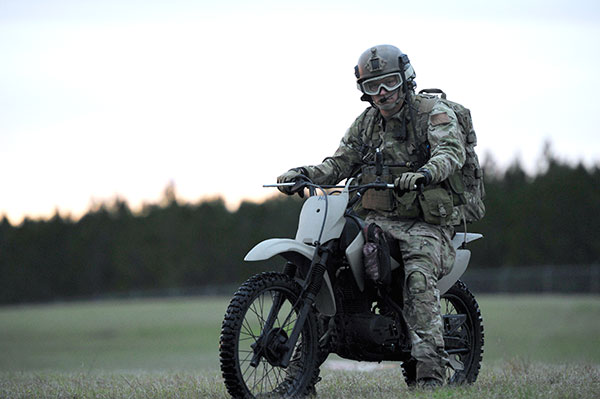




















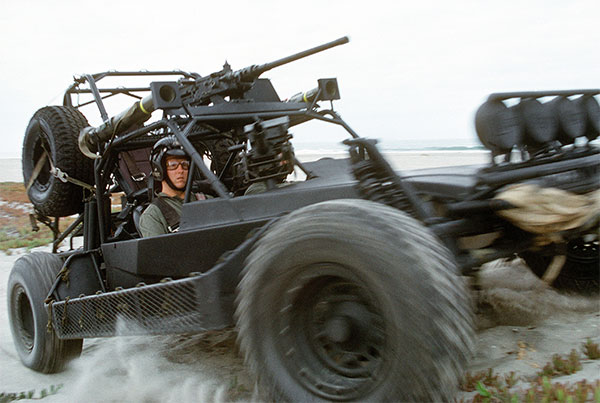




No comments:
Post a Comment